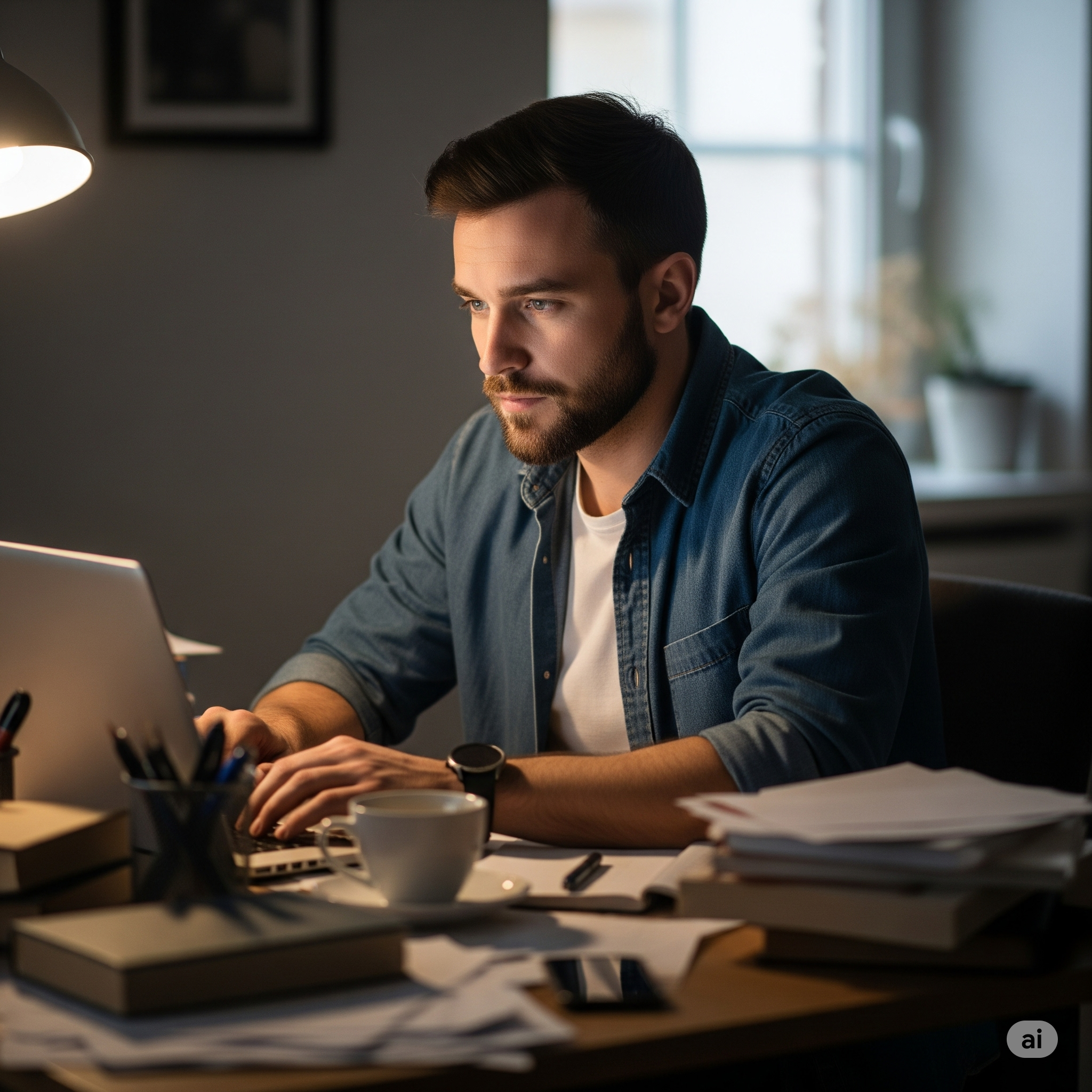Find Great, Free-to-Use Photos for Your Blog Posts 📸
Hi, Ben here.
You've written a fantastic article, but it looks a bit... plain. A great photo can grab a reader's attention and make your post look much more professional. But where do you find one?
Searching through free stock photo websites can take forever, and you often end up seeing the same old pictures everywhere. What if you could just describe the exact photo you need and have it created for you, for free?
This recipe will show you how to use AI to generate beautiful, high-quality, and completely unique photos for your blog posts.
What You'll Need
- Tool: Microsoft Designer (Image Creator)
- Time: 3 minutes
- Difficulty: Easy
Step 1: Describe the Image You Need
First, think about the theme and mood of your blog post. What kind of image would fit perfectly? Be descriptive.
Let's imagine we need a photo for an article about the challenges of working from home.
- Our Idea: A realistic photo of a person working at a messy desk, looking a bit tired but also determined. The mood should be relatable, not depressing.
Step 2: Copy the "Magic" Prompt
This prompt is specifically designed to create realistic photographs, not digital art. It uses keywords that tell the AI to think like a photographer.
Copy this entire block of text:
A photorealistic photo of [describe your scene and subject].
The style should be candid and have natural lighting. Use a shallow depth of field.
Step 3: Use the Prompt in Microsoft Designer
- Go to the Microsoft Designer Image Creator.
- Paste the "Magic" Prompt into the generation box.
- Replace the
[describe your scene and subject]part with your own description from Step 1. For our example, it would look like:" A photorealistic photo of a man in his 30s working late at a messy home office desk, looking thoughtfully at his laptop. The style should be candid and have natural lighting. Use a shallow depth of field." - Click "Generate".
Step 4: Get Your Custom Photo
The AI will generate four different photo options for you. Because we used photographic terms, the results will look much more like real photos and less like digital illustrations.
Here’s an example I generated using this exact prompt:

You now have a completely unique, high-quality image that perfectly matches the theme of your article, ready to be downloaded and used in your post.
Why This Works
This prompt is effective because we're not just describing the subject; we're describing the camera settings.
- "Photorealistic" tells the AI to aim for realism, not a painting or cartoon.
- "Natural lighting" stops the AI from using weird, artificial-looking studio lights.
- "Shallow depth of field" is a photography term that means the background is slightly blurry. This is a key trick that makes an image look like it was taken with a real camera lens, and it helps the main subject stand out.
By speaking the language of photography, you get a much better photograph.
Alternative Tools for This Recipe
- Ideogram AI: Is also fantastic at creating realistic images and has a "Photo" style button you can select.
- Midjourney: A more advanced (and paid) tool, but it produces some of the most stunningly realistic photos of any AI model.
You might also like...
A great photo needs great "alt text" to help with accessibility and SEO.
